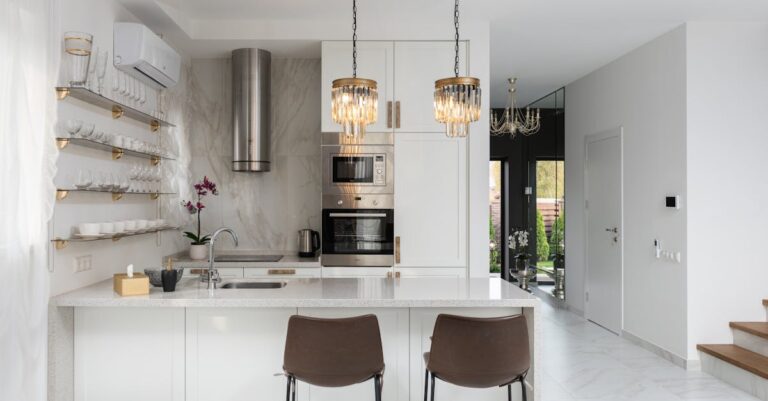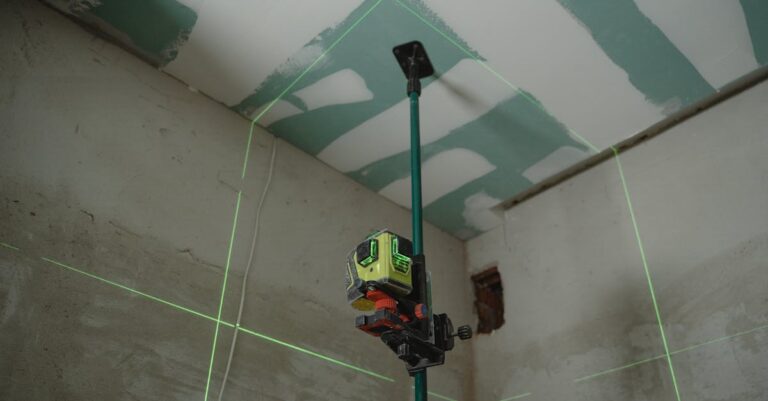Installing a new air conditioner feels like unwrapping a present on a hot summer day. But hold your horses! Before diving into that refreshing coolness, there’s a crucial waiting game to play. Just like a fine wine, an air conditioner needs a little time to breathe after installation.
Table of Contents
ToggleOverview of Air Conditioner Installation
Air conditioners require careful attention during installation. Proper installation ensures optimal performance and longevity. Technicians typically handle both the physical setup and necessary connections to power sources and vents.
After installation, refrigerant levels must stabilize. Allowing the refrigerant to adjust prevents issues with cooling efficiency. It’s crucial that the air conditioner sits undisturbed for a period to ensure the system operates correctly.
Most professionals recommend waiting at least 24 hours before turning on the unit. The even distribution of refrigerant supports effective compressor function. Turning on the unit too soon can compromise the air conditioner’s ability to cool properly.
Installation time varies depending on the system type. Central air conditioning systems may require several hours, while window units can be installed in under an hour. Regardless of type, each system can benefit from a brief waiting period after the technician departs.
Consulting the manufacturer’s guidelines provides specific waiting times. These recommendations often consider model-specific nuances that affect operation. Following these guidelines can lead to better performance and longevity for the air conditioner.
Maintaining a diligent approach during the initial hours post-installation pays off. Adhering to suggested waiting periods ensures both safety and effectiveness. While it may be tempting to turn on the unit immediately, allowing it time to breathe influences performance positively.
Factors Affecting Wait Time
Several factors impact the necessary wait time before turning on an air conditioner after installation. Understanding these elements ensures optimal performance and efficiency.
Type of Air Conditioner
Different air conditioner types require varying wait durations. Central air conditioning systems often need at least 24 hours for refrigerant levels to stabilize. In contrast, window units typically require a shorter waiting period, often around 12 hours. Ductless mini-split systems may also suggest a 12- to 24-hour wait depending on the specifics of the installation process. Always refer to the manufacturer’s guidelines for precise recommendations.
Installation Conditions
Installation conditions significantly influence waiting time. A level installation surface ensures proper fluid distribution, which can affect the necessary duration before operation. High humidity or excessively high temperatures during installation can increase refrigerant evaporation, necessitating additional wait time. Moreover, proper sealing of vents and ducts is crucial, as leaks can compromise system performance if addressed prematurely. Ensure that these conditions are suitable for optimal system function before starting the air conditioner.
Recommended Waiting Period
Patience is essential after installing an air conditioner. Following specific guidelines ensures optimal performance and longevity.
General Guidelines
Most professionals advise waiting at least 24 hours before using a central air conditioning system. A window unit might only require about 12 hours, while ductless mini-splits can necessitate a wait between 12 to 24 hours. Variations depend on the installation conditions, such as the surface’s evenness and the ambient temperature. Factors like humidity can affect refrigerant evaporation, increasing the required wait time. Ensuring proper sealing of vents and ducts also impacts wait duration; leaks can hinder overall performance.
Manufacturer Recommendations
Consulting the manufacturer’s guidelines is crucial for accurate waiting times. Many manufacturers provide specific suggestions tailored to different models. These recommendations consider the system design and installation intricacies. Following these insights can enhance the unit’s efficiency and extend its lifespan. Ignoring manufacturer advice may lead to performance issues or void warranties. Always check the documentation accompanying the air conditioner for precise instructions, as these can vary significantly across brands and models.
Signs That It’s Time to Turn On
Observing specific signs indicates when it’s time to activate an air conditioner after installation. High indoor temperatures serve as a primary signal. If the interior feels uncomfortably warm, it’s a strong indicator the system might be needed.
Checking for humidity levels also helps. High humidity levels within the home can prompt an earlier activation. A noticeable stickiness in the air often suggests that the air conditioner should be engaged to improve comfort.
Listening to the environment matters. Unusual noises from the installation area might indicate issues, prompting a technician’s assessment before turning it on. Prioritizing assessments like this ensures optimal functionality when the system operates.
Examining the installation area aids in decision-making. If it appears that the unit is secure and all connections are correctly made, it’s an encouraging sign to power up the unit. Inspecting for any visible leaks around ducts or vents plays a vital role in evaluating readiness.
Relying on observation of leaves or grass outside might provide additional information. Strong gusts of wind can carry unwanted debris toward the air conditioner, impacting its performance if activated too soon.
Understanding the specific manufacturer recommendations adds an essential layer of assurance. Consulting the manual confirms the exact time frame recommended for the particular model, enhancing confidence in the decision to turn it on. Following these signs ensures the air conditioner operates efficiently and effectively, maximizing comfort and performance in the home.
Waiting the appropriate amount of time before turning on a newly installed air conditioner is crucial for ensuring optimal performance. By allowing the refrigerant levels to stabilize and the system to settle, homeowners can prevent potential issues that could affect cooling efficiency.
Whether it’s 24 hours for central systems or around 12 hours for window units, following the manufacturer’s guidelines is key. Observing environmental factors and checking for any installation irregularities also play a significant role in determining readiness.
Patience during this initial phase not only enhances comfort but also extends the lifespan of the unit, making it a worthwhile investment in home cooling.



